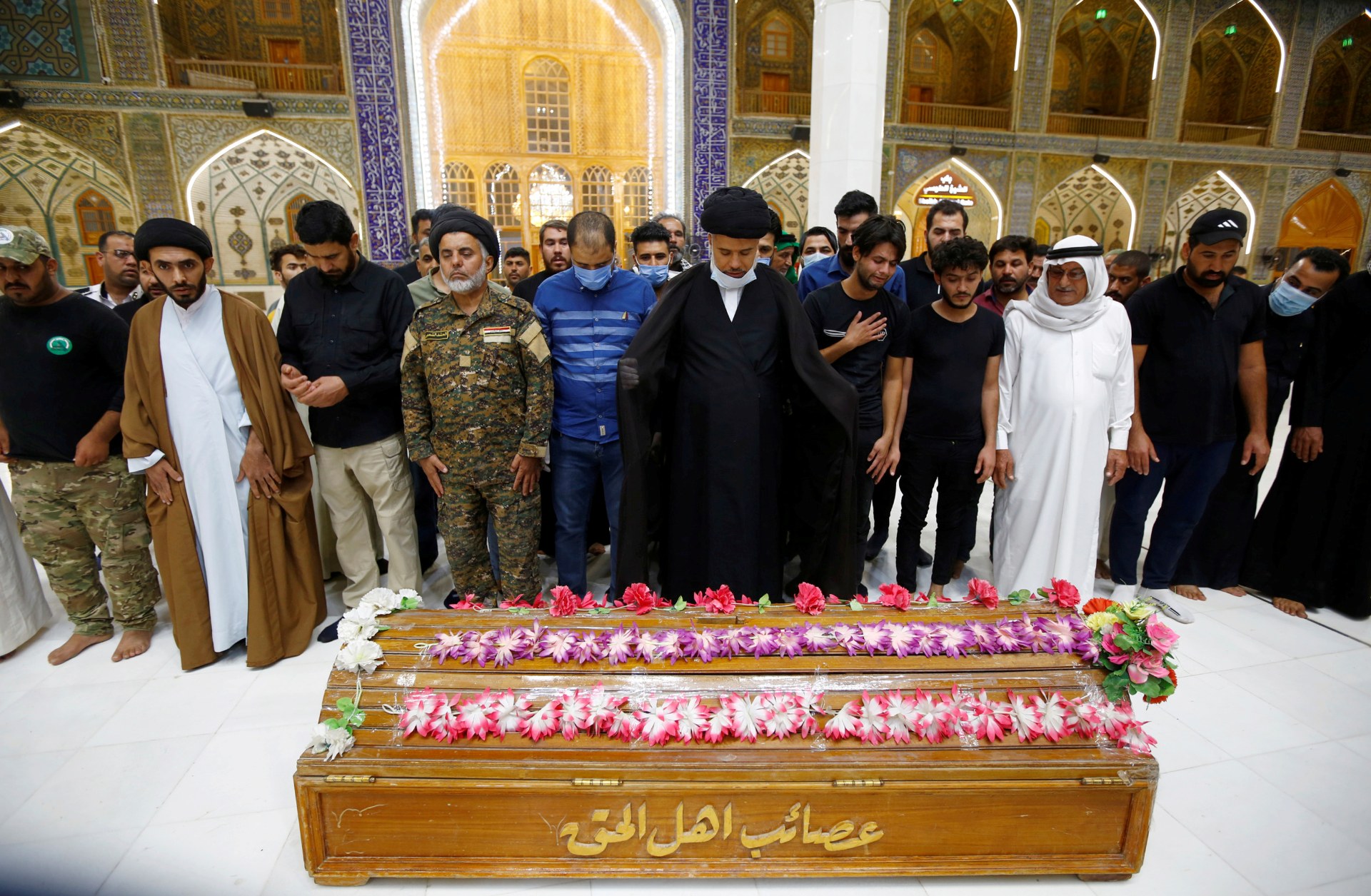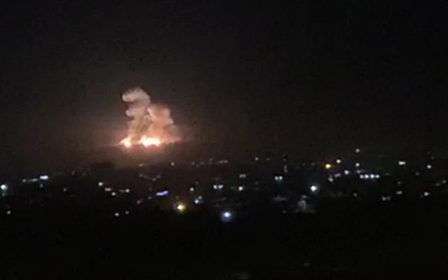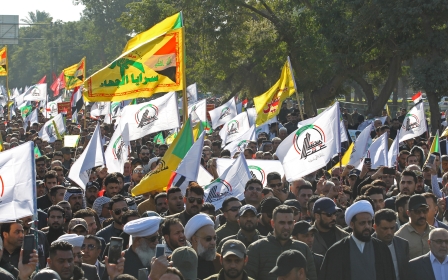Islamic State's 'Battle of Ramadan' rocks Iraq and stokes fears of resurgence

In the very early hours of Saturday morning, six youths busily prepared a pre-dawn meal before the long hours of Ramadan fasting began.
Relaxed, they drifted away from their observation point in Mukeshefah, a town on the Tigris River’s west bank some 40km south of Tikrit, and indulged in endless tales as they cooked in a caravan.
At no point did the paramilitary fighters notice the eyes that were watching them.
Moments later, masked by the total darkness that the rural farm area was submerged in, a group of Islamic State (IS) militants doused the caravan with gasoline and then sprayed it with bullets. By the time reinforcements arrived, the six charred bodies were all that remained of the young men.
'The same mistake always recurs. Calm breeds relaxation, speed creates confusion and the two lead to disaster'
- senior Iraqi military officer
The attackers, who investigations found were fully aware of the number of forces present, their arms and their daily habits, were not satisfied with killing the six youths.
New MEE newsletter: Jerusalem Dispatch
Sign up to get the latest insights and analysis on Israel-Palestine, alongside Turkey Unpacked and other MEE newsletters
Instead, they planted an explosive device on the road leading to the caravan, detonating it as soon as a support force arrived, killing another three and wounding four, security sources told Middle East Eye.
How many militants staged the attack and how they got to the youths’ position is unclear, though Iraqi intelligence is sure they fled to the Tigris and disappeared into the night by boat.
Hours later, at 9pm, another group of IS militants attacked a police station in the village of Zaghaniya, in northeast Diyala, killing four police and wounding a further 10, security sources said.
As in the earlier attack, an ambush had been laid, and reinforcements came under fire as soon as they arrived, with gunfire wounding three policemen and destroying two of their vehicles.
Well-planned, slickly executed and ruthless, the two assaults have raised the possibility that, two years after its territorial defeat, the Islamic State group is capable of replicating the fearsome operations that once left Iraq reeling.
A senior military officer, speaking on condition of anonymity, sought to play down these fears: “The two operations were not high profile and did not mean that IS has regained its ability to carry out major operations.”
The assaults, he insisted, instead reflect the “scale of neglect and relaxation” of the forces stationed at the two sites.
“The same mistake always recurs. Calm breeds relaxation, speed creates confusion and the two lead to disaster,” he said.
Still, fears have been stoked that an IS resurgence in Iraq’s Sunni heartland could begin to emerge.
‘Battle of Ramadan’
Suicide operations and attacks targeting Iraqi forces and civilians have decreased significantly since December 2017, when the Iraqi government announced IS’ defeat and the liberation of all areas the militant group had captured in the country’s north and west.
Since then, IS has lost the ability to carry out major attacks and its militants have gone underground, operating as sleeper cells that are activated whenever the opportunity arises.
That activity has sharply risen alongside the start of the holy month of Ramadan, with a total of four attacks across different governorates.
The Mukeshefah and Zaghaniya attacks were not the first, but they were the deadliest.
IS began what it has called the "Battle of Ramadan" with a suicide attack carried out by a militant wearing an explosive belt, which he detonated at the entrance of the Directorate of Intelligence and Counter-Terrorism in Kirkuk on 28 April, wounding two, security sources told MEE.
That was followed by a series of attacks concentrated in the triangle that extends between the governorates of Diyala, Kirkuk and Salah al-Din, known as the Hamrin Basin, targeting army and police patrols or the positions manned by the Popular Mobilisation (Hashd al-Shaabi) paramilitary forces.
The Basin is bordered by the Hamrin Mountains, which extend from the northeast of Diyala governorate to the northwest of the Tigris, and pass through areas north of Salah al-Din and southern Kirkuk.
An intelligence cable obtained by MEE reveals that IS has sent six snipers from its Umm al-Mumineen Aisha hideout in Diyala to al-Zubair ibn al-Awam in Salah al-Din’s Hawi al-Laban.
The group, led by Abu Abdullah al-Araj, one of IS’ most famous sharpshooters known as the “lame sniper”, was tasked with carrying out a series of attacks targeting checkpoints along the Tuz Khurmatu-Tikrit-Mutbijah road.
'These attacks will be a copy of the attacks that occurred before 2014, by setting up ambushes for convoys and military patrols'
- Iraqi intelligence cable
Another group of around 50 militants has arrived in Diyala to stage further raids in the area between Buhrz, Khanaqin and Hamrin, the cable said.
Meanwhile, a separate cable dated 30 April reveals that Iraqi intelligence is expecting “fierce and organised” IS attacks in the coming days targeting security forces deployed in Diyala, Salah al-Din and Kirkuk.
“These attacks will be a copy of the attacks that occurred before 2014, by setting up ambushes for convoys and military patrols, and attacking fixed security checkpoints,” it reads.
The triangle between the three provinces is a paradise for IS, an Iraqi paramilitary commander told MEE.
“It has been out of reach for Iraqi and American forces over recent years due to the roughness of the region and the difficult terrain,” one of the Popular Mobilisation forces’ (PMF) commanders operating in the area said.
“The region contains mountains, valleys, tunnels and caves, and it was the safe haven for the organisation's fighters fleeing from the rest of the areas,” he added.
"It also represents a link between the three governorates, in addition to Mosul and Anbar, on the one hand, and [Syria’s] Hasakah and Deir Ezzor on the other. After the Mukeshefah attack, the Iraqi forces backed by the PMFs moved in, and hopefully this nightmare will end.”
Room to manoeuvre
Several factors have provided IS room to manoeuvre, Iraqi military and security leaders told MEE.
The occasionally violent tensions between the US and Iran have distracted and destabilised Iraq, particularly since the US killing of Qassem Soleimeni and Abu Mahdi al-Muhandis in January.
Meanwhile, the coronavirus pandemic has at times seen much of Iraq go into hibernation, and drawn the security forces’ resources.
'All the international, regional and local parties operating in Iraq have an interest in amplifying the IS threat. America, Iran, the PMF factions, and most of the military leaders'
- Iraqi intelligence officer
Amid all this has been Iraq’s roiling political crisis, that has seen widespread demonstrations and a five-month governmental vacuum that was only solved on Wednesday after parliament voted in a new cabinet.
To keep Covid-19 infections under control, Iraqi forces stationed in bases across the country have been reduced by about 75 percent since February.
The US-led international coalition fighting IS has also withdrawn from more than 15 military bases, most of which are located in areas adjacent to the Hamrin Basin. This has both reduced the amount of intelligence provided to Iraqi security forces and significantly reduced the number of airstrikes on IS positions.
In this context, Baghdad expected an uptick in IS attacks, a senior military officer serving at the defence ministry’s headquarters told MEE.
“Dozens of cables that we have received over the past weeks have been stating their intention to launch attacks, especially during the month of Ramadan, which they see as an incentive for carrying out suicide operations,” the officer said.
"However, the preoccupation of many leaders with political competition and government formation negotiations, and their neglect of their forces, contributed to these violations.”
Tribal targets
The location of each attack makes one thing clear: the Islamic State was targeting rural areas secured by tribal fighters.
The Mukeshefah attack targeted the Tigris Regiment, fighters belonging to the Abu Issa tribe embedded in the PMF’s 35 Brigade.
Meanwhile the latest attacks, which took place in al-Rashad district of southern Kirkuk on Tuesday, targeted the tribal Sheikh Wasfi al-Asi regiment with explosives and gunfire, killing four fighters, a local security source told MEE.
"These tribal fighters are not trained, have no experience fighting IS, and never participate in a battle,” Yazin al-Jubouri, a PMF commander deployed in the area, told MEE.
According to Jubouri, tribal fighters were tasked with securing liberated territory during the major 2014-2017 battles with IS, in order to allow attacking forces to advance
"They represent the weakest link compared to other factions of the PMF, in terms of armament and training. They only have Kalashnikovs and pick-up vehicles,” he said.
Despite the succession of deadly raids, many Iraqi military leaders suggest IS’s human and financial resources are being deliberately inflated, and believe there are no real indications that the militant group is able to regain control of predominantly Sunni areas in the north and west any time soon.
"All the international, regional and local parties operating in Iraq have an interest in amplifying the IS threat. America, Iran, the PMF factions, and most of the military leaders,” an intelligence services officer, who declined to be named, told MEE.
As long as IS is considered a genuine threat, Iraqi and foreign soldiers and paramilitaries will continue to be deployed on the ground, large budgets allocated and weapons distributed, the officer noted.
“IS is a security threat, not a military one. They can’t even occupy a house or village for several hours, and do not have the ability to carry out specific operations,” he said.
“The attacks they carry out are for the media, and they will not achieve any real gains on the ground soon.”
Middle East Eye delivers independent and unrivalled coverage and analysis of the Middle East, North Africa and beyond. To learn more about republishing this content and the associated fees, please fill out this form. More about MEE can be found here.






